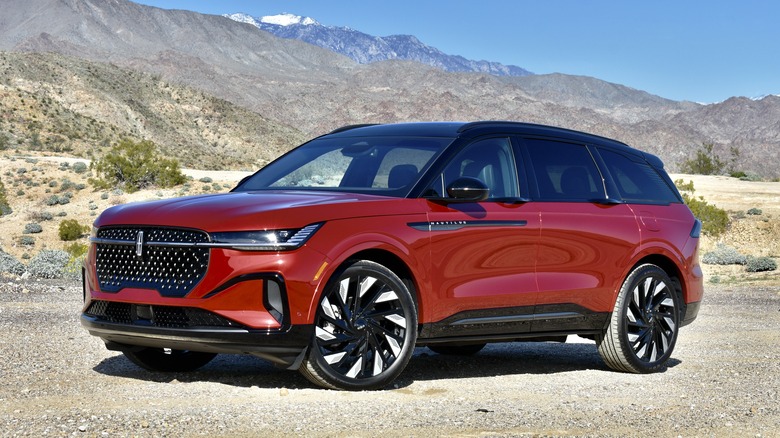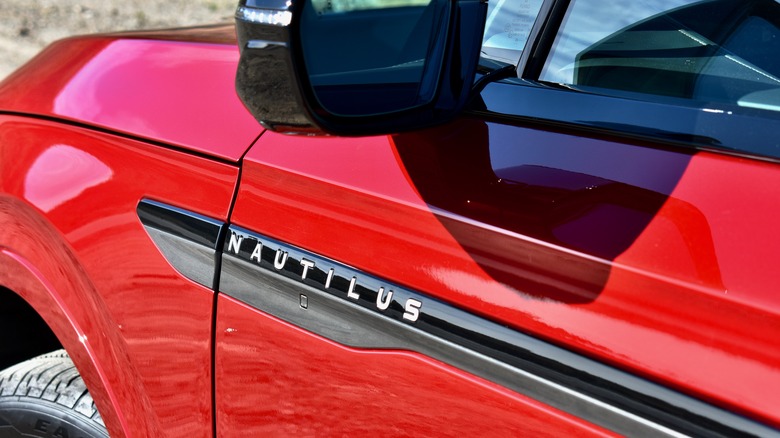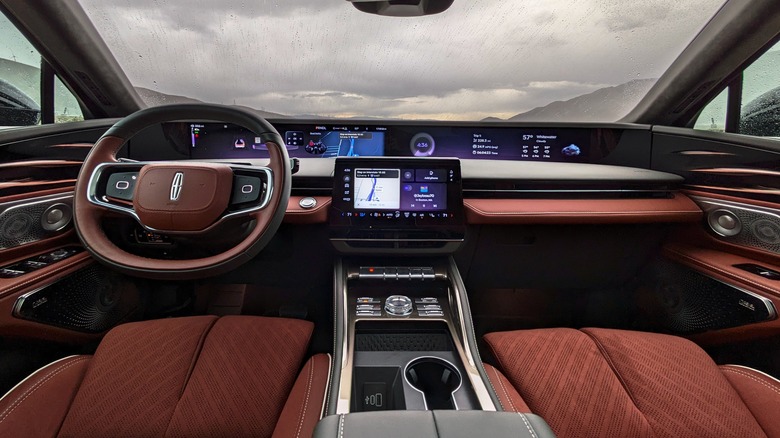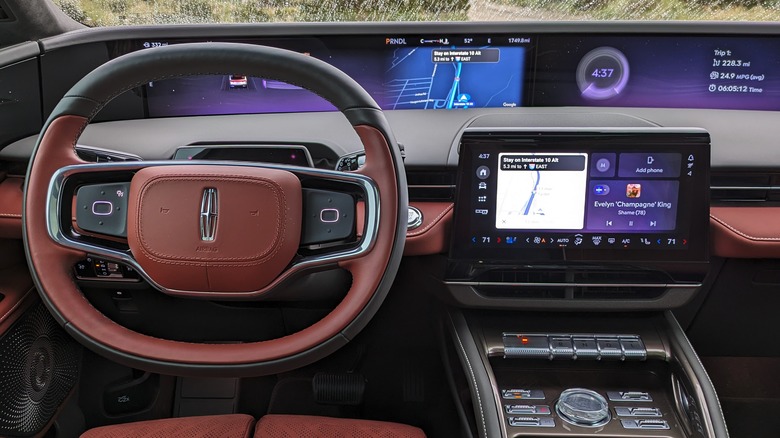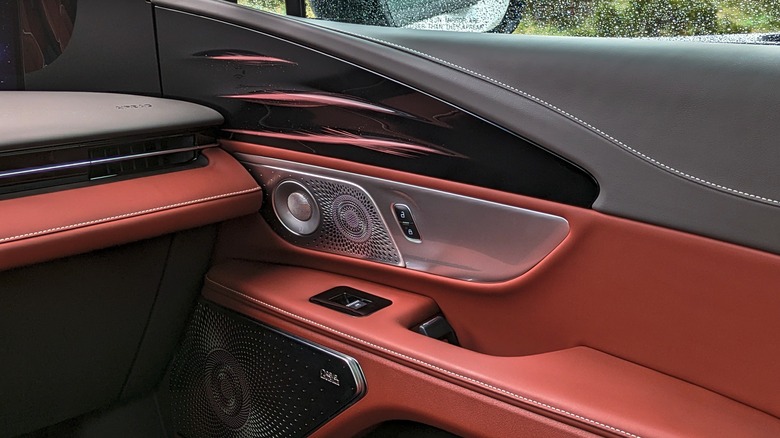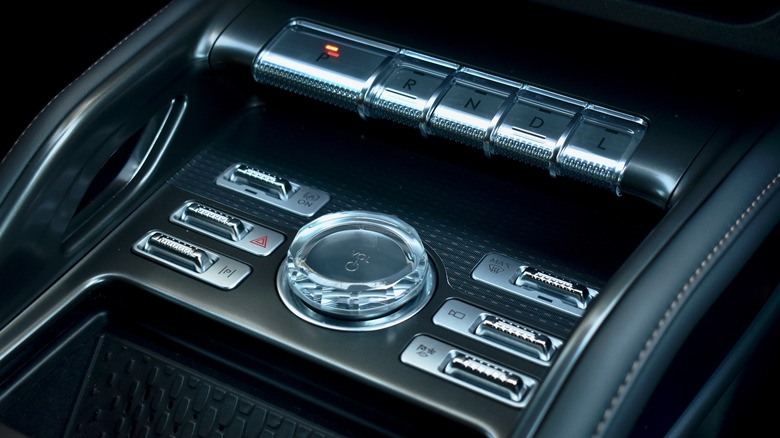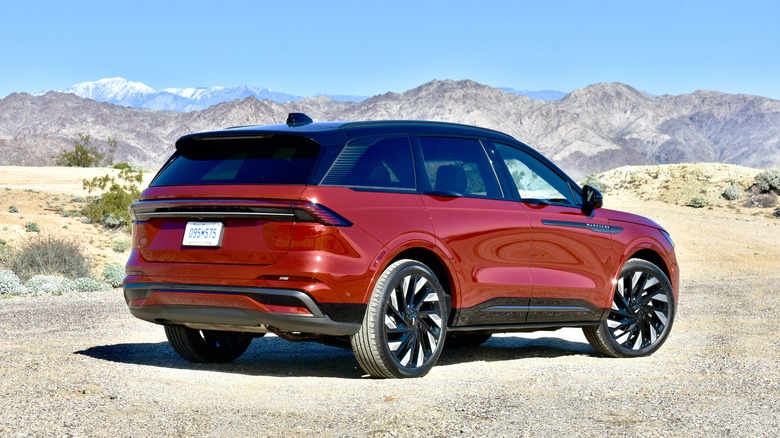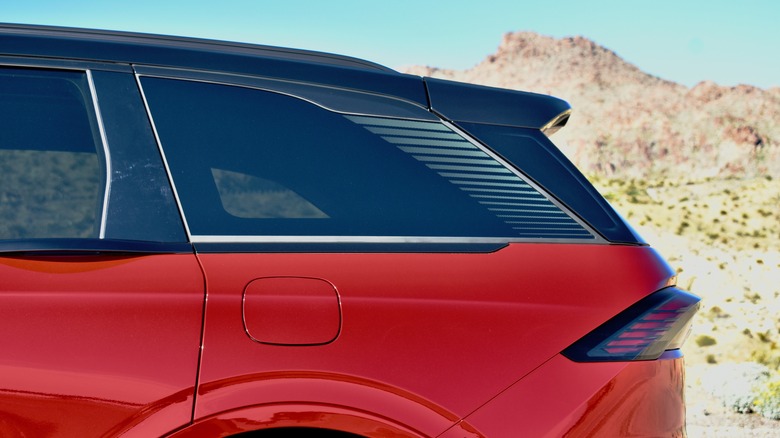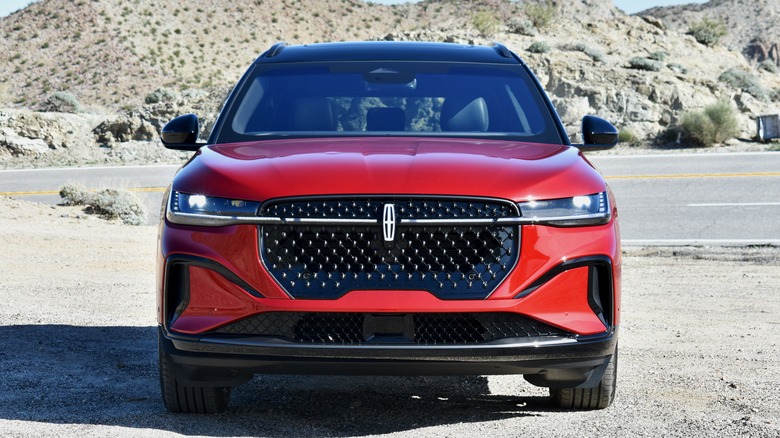2024 Lincoln Nautilus First Drive: Luxury SUV Gets More Screen Time
The arrival of the 2024 Lincoln Nautilus doesn't exactly come as a surprise. The previous-generation Nautilus, itself a heavy refresh of the old Lincoln MKX, was starting to show its age. Even its customer base, generally will to ignore some flaws for a prestige badge, were likely to starting to notice. With competitors like the Acura MDX and Lexus RX benefitting from recent redesigns, Lincoln needed to do something to win back the hearts of suburbia.
Yet Lincoln did something unusual with this redesign. The mechanical bits are pretty much what you'd expect. This is a big, cushy SUV, now with turbocharged four-cylinder and hybrid powertrains for added efficiency. But Lincoln married those sensible elements with a forward-looking interior built around an enormous screen and software-based features that aim to put a new spin on the midsize luxury SUV experience. The Nautilus mixes the novel and the familiar like no other vehicle in its competitive set.
Details matter
At first glance, the Nautilus looks like a subtle update of the Lincoln design language from the outgoing version and the Ford luxury brand's other models. The overall shape, with a decidedly cab-rearward profile and upright front end that displays the grille like a sports fan proudly unfurling a homemade banner, are all typical Lincoln. But this is an instance where the details matter.
Lots of new cars have thin headlights to help give the impression of width, because the mantra of good automotive design is "longer, lower, wider." Lincoln's designers did that here, but also gave the lights a taller hockey-stick side element that draws the eye along the sides of the car, blending perfectly with the subtly-stretched front fenders and the most attractive application of Lincoln's fender badging yet.
The Nautilus also adopts a light-up grille, but the relatively small Lincoln logo connected to the headlights by a thin illuminated ribbon is a more tasteful execution than Mercedes' giant three-pointed star or BMW's glowing butterflied steak. And this SUV brings back the minimalist door handles last seen on the Lincoln Continental sedan. Taking the form of loops that extend out from the window sills, they help keep the Nautilus' flanks looking clean and simple.
Screen time
Like the nuclear-powered submarine it shares its name with, the Nautilus hides new technology behind its conventional-looking exterior. But instead of a nuclear reactor, the Nautilus' party piece is the new Lincoln Digital Experience infotainment system, fronted by a dashboard-spanning 48-inch display screen, plus a small touchscreen.
As other automakers have shown, building an entire interior around the biggest-possible screen doesn't always lead to the most elegant designs. But as long as you don't look too closely at the space between the screen and the edge of the dashboard, the curved display looks normal and well-integrated. It actually blends into the doors thanks to trim pieces that can also display simple graphics, making them true extensions of the screen. Those graphics do wash out in direct sunlight, though.
A square steering wheel makes it easier to see the screen, and felt surprisingly good despite its nontraditional shape. The center stack, with its touchscreen pushbutton shifter controls, and buttons is an excellent example of packaging efficiency. Lincoln also placates automotive journalists with a large crystal volume knob right in the middle, but switched vent controls to a digital setup accessible only through the touchscreen.
Driver-centric infotainment
The Lincoln Digital Experience system is more than just a big screen. It's backed by hardware that boosts processing power, more flexible software that allows for a higher frequency of over-the-air (OTA) updates and more features. It also marks Lincoln and Ford's shift to Google Built-in apps, but retains Apple CarPlay, Android Auto, and Amazon Alexa connectivity.
The main screen is display only; everything is controlled using the smaller center-stack touchscreen, voice control, and haptic pads on the steering wheel. The screen is positioned high and far back to be closer to the driver's line of sight, making it more like a head-up display than a conventional instrument cluster or dashboard infotainment screen. This, along with a setup that places things like the clock and tire pressure gauge in widgets on the far side of the dashboard, nicely decluttered the driver's view. But that also means front-seat passengers will be stuck looking at tire pressure information, or whatever else the driver decides to put on the screen.
Because, while the screen extends into the front passenger's real estate, this setup is really all about the driver. Lincoln doesn't include any passenger-specific functionality, as in the separate front-passenger screens available from Mercedes or Jeep, for example. While Lincoln's setup means solo drivers won't be left with a superfluous screen, it doesn't provide an elevated level of functionality. The Nautilus' interface worked as well as more conventional setups despite being different—but it didn't work better.
New features seeking a better application
Despite a well-executed interface, the new Lincoln infotainment system doesn't quite live up to the hype in part because many of its noteworthy features can't be used while driving. Google Play Store integration means apps for web browsing, video streaming, and even gaming—but only while parked.
The same goes for Lincoln Rejuvenate, which combines on-screen graphics, sounds piped through the audio system, massage, and scents from a new in-car perfume spritzer to create a moment of tranquility. Scheduled to launch on 2025 models (with an OTA update for 2024 models) it's something you don't normally see on vehicles in this price range and makes good use of the Nautilus' excellent seat massagers. They're worthy of a spot in your living room.
Features like these, which require you to sit in a stationary but running vehicle, seem better suited to an electric car than something with a gasoline engine under the hood.
Powertrains refocus on efficiency
Lincoln does plan to start launching all-electric models in 2025, but for now the Nautilus is gets a 2.0-liter turbocharged four-cylinder engine and eight-speed automatic transmission as standard equipment, with a hybrid powertrain based around the turbo-four optional. All-wheel drive is standard with both powertrains.
The base four-cylinder engine, which carries over from the outgoing Nautilus, produces 250 horsepower and 280 pound-feet of torque. The hybrid powertrain, which is new for 2024, is rated at 300 hp and 295 lb-ft of torque. That's less than the 2.7-liter twin-turbo V6 that was previously available on top Nautilus Black Label models.
The emphasis is now on efficiency, and the Nautilus hybrid does deliver with an EPA-estimated 30 mpg combined (30 mpg city, 31 mpg highway). The non-hybrid powertrain's 24 mpg combined (21 mpg city, 29 mpg highway) also marks a slight improvement over comparable 2023 models with the same engine.
However, it's disappointing that Lincoln doesn't offer a plug-in hybrid powertrain as it does in the Corsair (and, previously, the Aviator). It seems strange that Lincoln, once a proponent of plug-in hybrids, is turning away from them despite many rivals continuing to offer them.
Smooth sailing
The powertrains and chassis don't try to break new ground like the Nautilus' infotainment system, but the driving experience is one of the best parts of this SUV. The hybrid powertrain is the standout, providing smooth acceleration that imperceptibly blends gasoline and electric power.
The standard non-hybrid powertrain is good as well, but you'll be more aware that there is a four-cylinder engine under the hood of your Lincoln thanks to increased noise from the harder-working engine. The Nautilus was otherwise impressively quiet, with virtually zero wind noise even as gusts of wind blew sand across the road during a test drive near Palm Springs, California, where Lincoln hosted SlashGear to test its new car.
The route also included some twisty roads better suited to a BMW than a Lincoln, but Nautilus did well, changing course with dignity and minimal body roll. That excellent body control didn't compromise the cushioned ride quality one would expect of a Lincoln, either. It's tempting (and appropriate, given the nautical name) to say that the Nautilus floated over bumps, but that would actually be doing the well-tuned suspension an injustice. There may be a lot of cushioning between the driver and the road, but you never feel disconnected from it.
However, the brakes in both the gasoline and hybrid models did not feel as well-tuned as everything else. Pedal feel was mushy, and it was hard to modulate the brakes at slow speeds when approaching stop signs or driving in stop-and-go traffic. This made juddery stops pretty much unavoidable.
A sensible choice
The Nautilus is a pleasant car to drive, but it's also an SUV that needs to justify its generous performance with passenger and cargo-hauling capability.
The Lincoln has an impressive amount of second-row legroom—more than the rival Lexus RX—but the available panoramic glass roof cuts into rear-seat headroom. And rear-seat passengers don't get any tech gimmicks to match the first row. A third row isn't available, but your local Lincoln dealer will happily sell you an Aviator if that's a priority.
Lincoln quotes 36.4 cubic feet of cargo space with the rear seats in place and 71.4 cubic feet with the seats folded for the base Premiere trim level—also more than the RX, and about the same as the Acura MDX. But that shrinks to 35.2 cubic feet with the seats up and 68.8 cubic feet with the seats down in the higher-level Reserve and Black Label models.
For those wanting the best driver-assist tech, the Nautilus is also available with Ford's BlueCruise system, which allows for hands-free driving on large swaths of U.S. highways. While General Motors offers the similarly-capable Super Cruise system on its Cadillac XT6, that vehicle isn't as well-executed as the Nautilus. Its interior and driving dynamics are lower-rent, and lack of a hybrid powertrain means worse fuel economy.
Simply a good SUV
The Nautilus is a worthy midsize luxury SUV. It exceeds expectations in design and driving dynamics, while offering one of the best driver-assist systems in the business. But the thing that was really supposed to set the Nautilus apart—its next-generation infotainment system—is mostly notable just for real-world usability. Lincoln avoided disaster by making this elaborate system truly functional, but it likely had loftier goals for such an ambitious rethink.
Putting this infotainment system into the Nautilus first also seems like a half step. It sticks out in a vehicle that otherwise takes few design or engineering risks, positioned as it is in the middle of Lincoln's lineup. This system will likely feel like a better fit in Lincoln's more ostentatious Navigator—when it eventually makes it into that flagship model—or in EVs that will allow drivers to play video games or enjoy relaxation programs without pumping exhaust fumes into the atmosphere unnecessarily.
The Nautilus also works against what appears to be Lincoln's strategy of promoting more automotive screen time. The Lincoln Digital Experience infotainment system is a platform for software-based features that make spending time in a parked car more pleasant. But the best thing about the Nautilus is the way it drives. As it should be.
